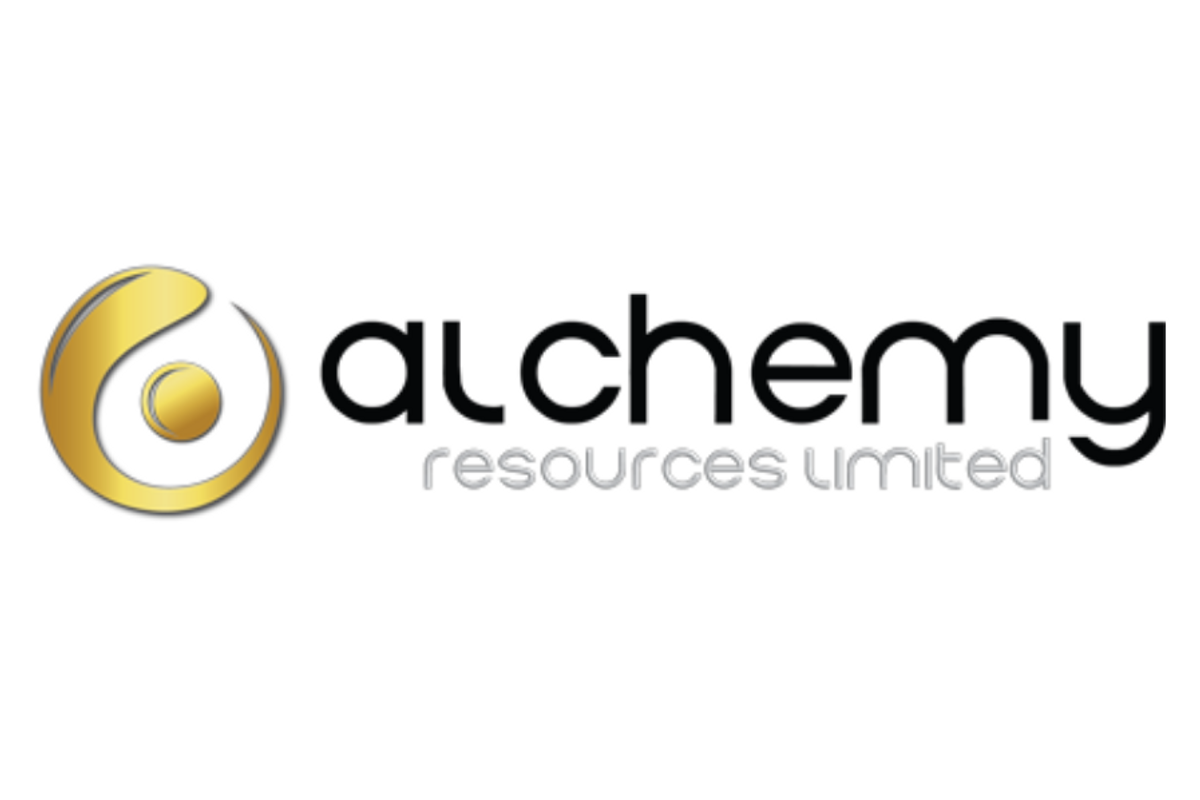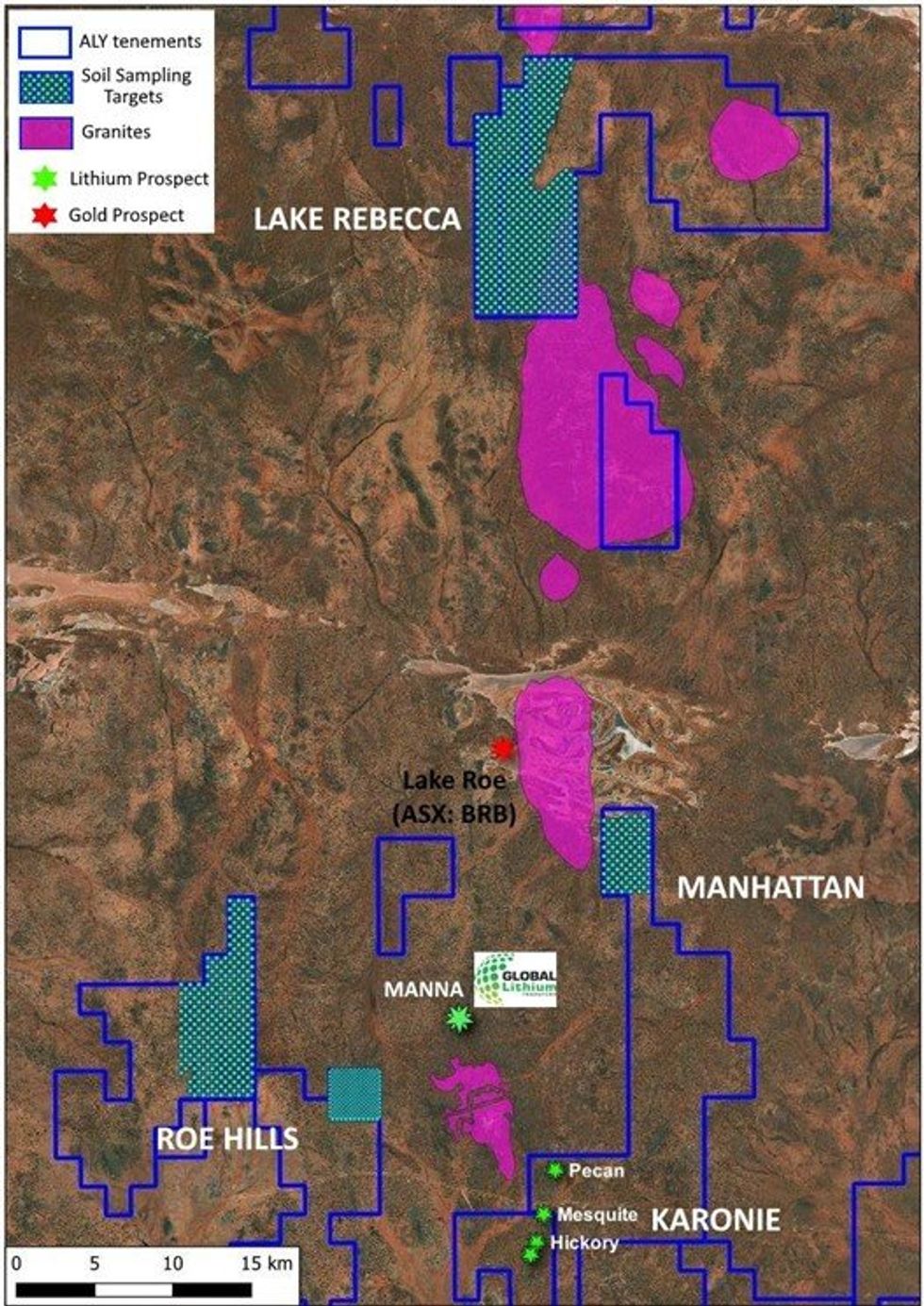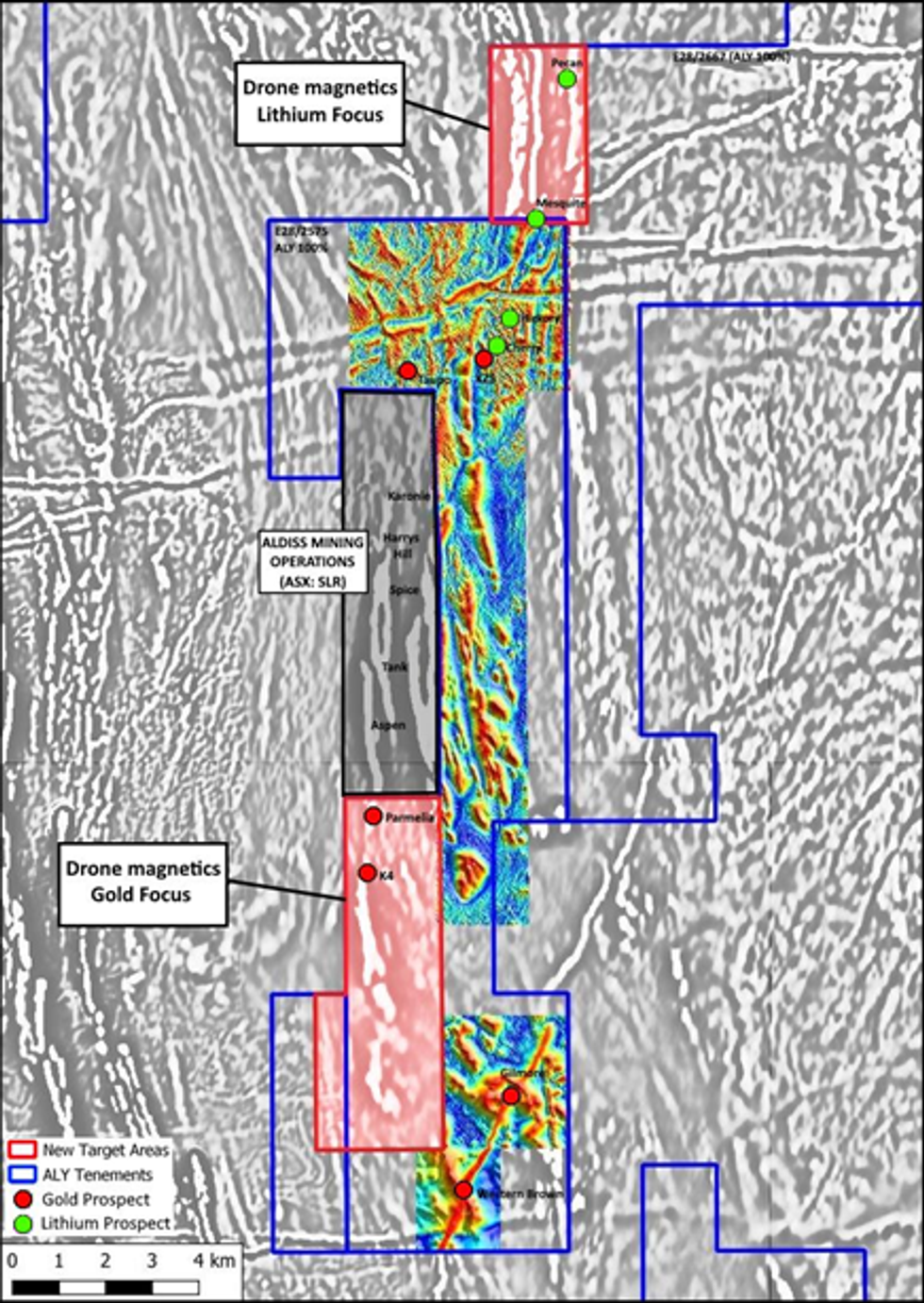
March 08, 2023
Alchemy Resources Limited (ASX: ALY) (“Alchemy”) is pleased toannounce an exploration update for its Karonie and Lake Rebecca Projects (WA).
HIGHLIGHTS
- Lithium focussed gravity survey completed at Cherry, Hickory, Mesquite and Pecan Prospects. Data processing underway with results expected in March.
- Project wide regional soil geochemical sampling commenced on high priority lithium and gold targets at Karonie and Lake Rebecca.
- High resolution drone magnetics commenced on priority lithium gravity anomalies at Hickory and on regional gold targets at Karonie.
- Access agreements and programs of work submitted to facilitate upcoming drill programs.
Project wide soil sampling has commenced on the high priority Karonie and Lake Rebecca lithium targets aiming to cover the Roe Hills and Manhattan Prospect areas, which sit immediately to the west and east and contiguous with Global Lithium Resources’ (ASX: GL1) Manna deposit prospects. Soil sampling will also be undertaken on the Lake Rebecca Prospects, which showed prospective “Goldilocks Zone” geology after Company geologists conducted a site visit in November 2022.
Gravity data collection at the 5.4km x 1.6km corridor towards Pecan has been completed with data processing in progress. Drone magnetics has also commenced in this area to assist in targeting on the Hickory gravity corridor, as well as additional zones being flown on potential gold bearing structures to the south of Silver Lake Resources’ (ASX: SLR) Aldiss Mining operations.
Chief Executive Officer Mr James Wilson commented: “We are pleased to complete the larger gravity survey at Hickory with the aim of mapping the pegmatite structures over a large area towards Pecan. In tandem with this, the high resolution drone magnetics over this area will provide additional layers of detail to assist with drill targets. We are also kicking off regional soils programs which will give us a broader picture of lithium anomalism surrounding the Manna Project at Alchemy’s Roe Hills Prospect to the west and our Manhattan Prospect to the east, as well as lithium prospective areas at Lake Rebecca to the north. At the same time we continue to progress gold exploration with the high resolution drone magnetics to the south of Silver Lake’s Aldiss Operations which will give us near term targets to test.”
CURRENT ACTIVITIES
ROE HILLS PROSPECT SOIL SAMPLING
Roe Hills lies along a distinctive structural trend from the Pegmatite field that hosts the Manna Lithium deposit (32.7Mt @ 1.0% Li2O1) 5km to the north-east. GSWA mapping has identified a high density of narrow plagioclase dykes, porphyritic dykes and quartz veins mapped adjacent to the granite contact zone. Multi-element soil sampling conducted by Alchemy in 2018-2020 highlighted multiple areas of low-level lithium anomalism and coincident pathfinder anomalism across a broad strike extent. Mapped dykes appear to have a parallel north-south strike extent, parallel to the greenstone/granite contact, however most of the area around the known mapped dykes are covered by alluvium and it is likely that these areas are far more extensive than the known outcrops. Soil sampling programs were originally targeting gold mineralisation and as a result, coverage of the prospective areas is limited.
The current soil sampling campaign at Roe Hills is aimed at gaining a complete dataset on the western side of the Cardunia granite adjacent to the Manna lithium deposit. First pass soil sampling completed in 2019 identified several lithium pathfinder anomalies and this program is aimed to extend and infill these anomalies.
MANHATTAN PROSPECT SOIL SAMPLING
The Manhattan prospect sits immediately east of GL1’s Manna project. Alchemy conducted shallow RAB drilling for gold exploration in 20182 which intersected coarse grained fractionated dolerites in proximity to the regional granite contact. The area has seen no modern exploration for lithium and only limited exploration for gold despite being located along the Claypan shear which extends up towards Breaker Resources’ Lake Roe gold deposit (1.7Moz3) nearby. Multi-element soil sampling is designed on a 400m x 400m offset grid to test for lithium pathfinder anomalies adjacent to the buried granite that lies underneath Lake Roe. No lithium targeted exploration has been undertaken around the Lake Roe area previously.
LAKE REBECCA SOIL SAMPLING
The Lake Rebecca Project includes seven granted exploration licences and three applications covering 570km² of Archean greenstones in the Eastern Goldfields of Western Australia. The Project is located 110km east of Kalgoorlie in a highly prospective geological setting, covering greenstones, numerous internal granites and known gold bearing structures. It is located just 10km southeast of Northern Star Resources’ (ASX: NST) Carosue Dam deposit (4.3Moz4), and 6km west of Ramelius Resources’ (ASX: RMS) Rebecca gold deposit (1.2Moz5).
Alchemy geologists conducted a reconnaissance visit to Lake Rebecca in late November 2022. Multiple feldspar rich granite dykes were mapped throughout the tenement package adjacent to the small regional granite intrusions within the interpreted Goldilocks Zone for pegmatite formation. A coarse-grained quartz-feldspar pegmatite was seen during the recent field reconnaissance visit.
Soil sampling is designed to test for lithium anomalism on a 400m X 400m offset grid. This program is targeting areas where known amphibolite facies metamorphic grade rocks occur, which are the ideal conditions for Lithium-Caesium- Tantalum (“LCT”) pegmatites to form. Previously no exploration for lithium has occurred at Lake Rebecca and Alchemy expects this to be the first of several lithium targeted exploration programs.


NEXT STEPS
- Finalise interpretation of the gravity survey data in combination with the high-resolution drone magnetics.
- Commence ground truthing of results and potential target areas from the expanded gravity survey.
- Complete heritage surveys to allow for future drill programs.
- Assess broader regional prospectivity at southern Karonie tenements.
Click here for the full ASX Release
This article includes content from Alchemy Resources Limited, licensed for the purpose of publishing on Investing News Australia. This article does not constitute financial product advice. It is your responsibility to perform proper due diligence before acting upon any information provided here. Please refer to our full disclaimer here.
ALY:AU
The Conversation (0)
Latest News
Latest Press Releases
Related News
TOP STOCKS
American Battery4.030.24
Aion Therapeutic0.10-0.01
Cybin Corp2.140.00